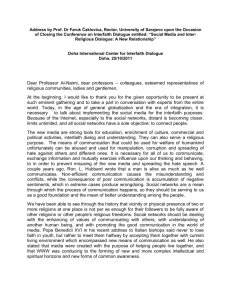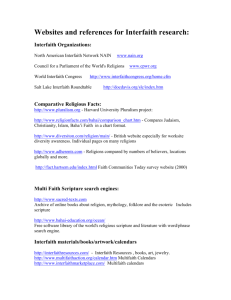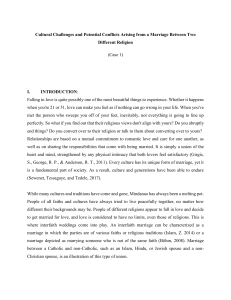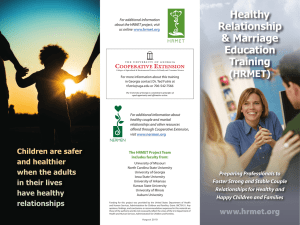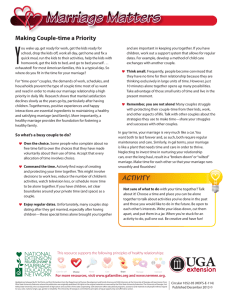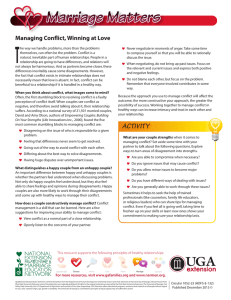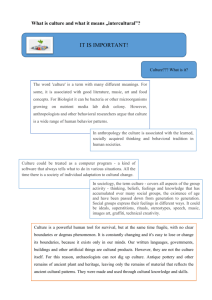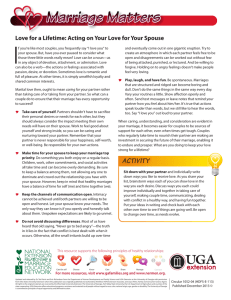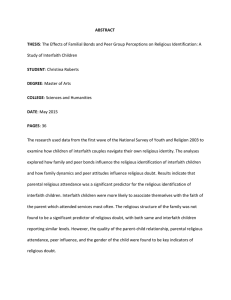W One Marriage, Two Religions
advertisement
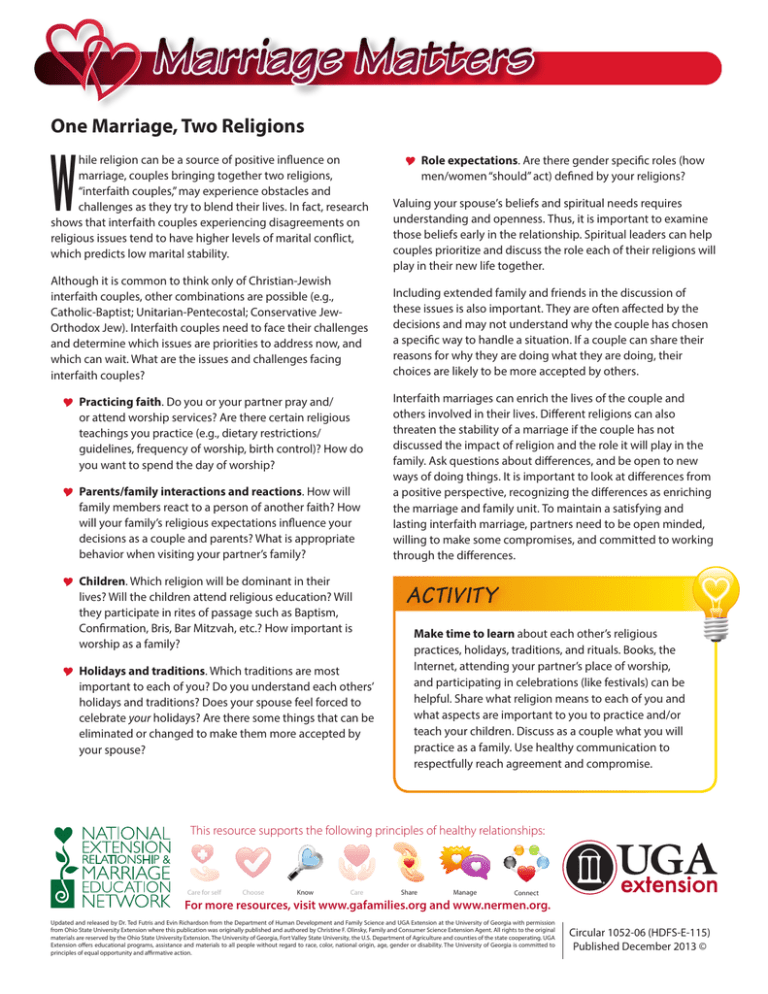
One Marriage, Two Religions W hile religion can be a source of positive influence on marriage, couples bringing together two religions, “interfaith couples,” may experience obstacles and challenges as they try to blend their lives. In fact, research shows that interfaith couples experiencing disagreements on religious issues tend to have higher levels of marital conflict, which predicts low marital stability. Although it is common to think only of Christian-Jewish interfaith couples, other combinations are possible (e.g., Catholic-Baptist; Unitarian-Pentecostal; Conservative JewOrthodox Jew). Interfaith couples need to face their challenges and determine which issues are priorities to address now, and which can wait. What are the issues and challenges facing interfaith couples? � Practicing faith. Do you or your partner pray and/ or attend worship services? Are there certain religious teachings you practice (e.g., dietary restrictions/ guidelines, frequency of worship, birth control)? How do you want to spend the day of worship? � Parents/family interactions and reactions. How will family members react to a person of another faith? How will your family’s religious expectations influence your decisions as a couple and parents? What is appropriate behavior when visiting your partner’s family? � Children. Which religion will be dominant in their lives? Will the children attend religious education? Will they participate in rites of passage such as Baptism, Confirmation, Bris, Bar Mitzvah, etc.? How important is worship as a family? � Holidays and traditions. Which traditions are most important to each of you? Do you understand each others’ holidays and traditions? Does your spouse feel forced to celebrate your holidays? Are there some things that can be eliminated or changed to make them more accepted by your spouse? � Role expectations. Are there gender specific roles (how men/women “should” act) defined by your religions? Valuing your spouse’s beliefs and spiritual needs requires understanding and openness. Thus, it is important to examine those beliefs early in the relationship. Spiritual leaders can help couples prioritize and discuss the role each of their religions will play in their new life together. Including extended family and friends in the discussion of these issues is also important. They are often affected by the decisions and may not understand why the couple has chosen a specific way to handle a situation. If a couple can share their reasons for why they are doing what they are doing, their choices are likely to be more accepted by others. Interfaith marriages can enrich the lives of the couple and others involved in their lives. Different religions can also threaten the stability of a marriage if the couple has not discussed the impact of religion and the role it will play in the family. Ask questions about differences, and be open to new ways of doing things. It is important to look at differences from a positive perspective, recognizing the differences as enriching the marriage and family unit. To maintain a satisfying and lasting interfaith marriage, partners need to be open minded, willing to make some compromises, and committed to working through the differences. ACTIVITY Make time to learn about each other’s religious practices, holidays, traditions, and rituals. Books, the Internet, attending your partner’s place of worship, and participating in celebrations (like festivals) can be helpful. Share what religion means to each of you and what aspects are important to you to practice and/or teach your children. Discuss as a couple what you will practice as a family. Use healthy communication to respectfully reach agreement and compromise. This resource supports the following principles of healthy relationships: Care for self Choose Know Care Share Manage Connect For more resources, visit www.gafamilies.org and www.nermen.org. Updated and released by Dr. Ted Futris and Evin Richardson from the Department of Human Development and Family Science and UGA Extension at the University of Georgia with permission from Ohio State University Extension where this publication was originally published and authored by Christine F. Olinsky, Family and Consumer Science Extension Agent. All rights to the original materials are reserved by the Ohio State University Extension. The University of Georgia, Fort Valley State University, the U.S. Department of Agriculture and counties of the state cooperating. UGA Extension offers educational programs, assistance and materials to all people without regard to race, color, national origin, age, gender or disability. The University of Georgia is committed to principles of equal opportunity and affirmative action. Circular 1052-06 (HDFS-E-115) Published December 2013 ©
